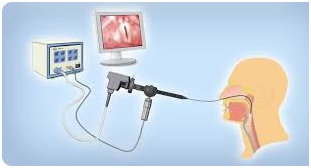
Overview
Dysphagia is a symptom that expresses the inability to make the alimentary bolus progress from the mouth to the stomach normally. It includes both the inability to initiate swallowing and the sensation that ingested food is retained in the esophagus. It may be due to an organic or functional alteration, and could affect patients of all ages. However, it occurs more frequently in people older than 60 years.
Although it is true that the majority of older adults have difficulty swallowing due to a natural process associated with aging, it is important to bear in mind that this situation can lead to nutritional and even respiratory complications, due to the possibility of bronchoaspiration, therefore, a thorough evaluation by a gastroenterologist is necessary to rule out the existence of any underlying pathology that could be causing this symptomatology.
Classification of dysphagia
From the anatomical point of view, dysphagia is classified as oropharyngeal and esophageal. Oropharyngeal dysphagia encompasses swallowing disorders of oral, pharyngeal, and laryngeal origin, and accounts for almost 80% of diagnosed dysphagia. Esophageal dysphagia refers to alterations in the upper esophagus, the esophageal body, and the esophageal sphincter. It is usually caused by mechanical causes and accounts for 20% of diagnosed dysphagia.
Causes of oropharyngeal dysphagia
Neurological alterations
- Stroke
- Multiple sclerosis
- Amyotrophic Lateral Sclerosis
- Parkinson’s disease
- Huntington’s Korea
Muscular alterations
- Myasthenia gravis
- Polymyositis
- Dermatomyositis
Local obstructive processes
- Post-radiotherapy fibrosis
- Tumors (mouth, pharynx, larynx, thyroid)
- Inflammatory processes (tonsillitis, pharyngitis, etc.)
Functional disorders
- Motor alterations of the upper esophageal sphincter
- Pharyngoesophageal motor incoordination
- Pharyngeal hypomotility
Causes of esophageal dysphagia
Organic alterations
- Benign and malignant tumors of the esophagus
- Esophageal stenosis (caustic, peptic, etc.)
- Esophageal membranes, Schatzki ring
- Esophageal diverticula
Primary functional disorders
- Achalasia
- Esophageal diffuse spasm
- Hypertonia of the lower esophageal sphincter
Secondary functional disorders
- Scleroderma
- Lupus erythematosus
- Diabetic neuropathy,
- Alcoholic neuropathy
- Progressive muscular dystrophy
The utility of endoscopy in patients with dysphagia
Fiberoptic Endoscopic Evaluation of Swallowing (FEES) is the method most frequently used to evaluate patients with dysphagia, the procedure is performed with a flexible fiberscope connected to a light source and a video device that records the swallowing process. The patient is studied while swallowing foods of different consistency (solid, semi-solid, and liquid), repeated evaluations are usually carried out to check the presence of bronchoaspiration and to determine the effect of fatigue on swallowing. The main aspects to be evaluated are the passage of the food bolus to the hypopharynx, and the presence of pharyngeal debris, bronchoaspiration, and/or regurgitation. 1

In cases of esophageal dysphagia, endoscopy allows direct observation of the organic or functional alterations that affect the esophagus, as well as the possibility of taking samples for the performance of pathological studies (biopsy and cytology). Endoscopy also works as a therapeutic method since it allows the extraction of foreign bodies, the resection of tumors and the dilatation of esophageal narrowing.
Conclusion
Dysphagia is a common symptom that is often indicative of an underlying disease that can lead to severe health problems. If you suffer from dysphagia or trouble swallowing, it is important that you do not underestimate this symptom and consult your gastroenterologist as soon as possible.At Gastroenterology of Greater Orlando, we are experienced at diagnosing and treatingswallowingproblems. To learn more, you can visitgreaterorlandogi.com.